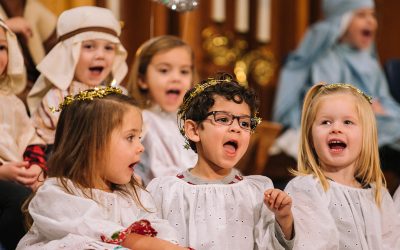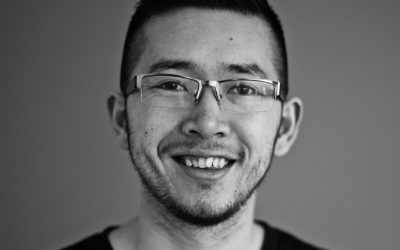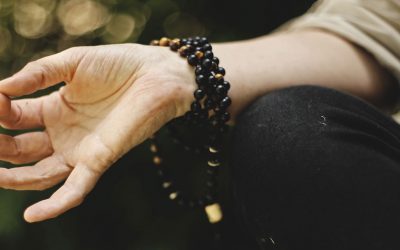Funerary Rites: How we Mourn and Bury our Dead During a Pandemic
Photo by Gabriella Clare Marino/Unsplash
By Stephanie Parker
Funerals, burials and other ways of communally commemorating those who have died have always been part of human history. The need for social distancing has upended these psychologically important rituals and fostered creative alternatives.
COVID-19 has affected the world in practically every arena, from health and the economy to travel and entertainment. It has also had a dramatic impact on death, not just in terms of the number of people who have died — approaching 980,000 as of September 24 — but in how family and friends can honour them.
Faced with social distancing, many have turned to creative solutions such as virtual gatherings for group mourning. But although services via Zoom can bring people together, they miss the in-person experience that can be regarded as vital to giving someone a “good” sendoff, says Matthew Engelke, an anthropologist in the Department of Religion at Columbia University.
In 2019, before any of us had heard of COVID-19, Engelke wrote about death rituals in the Annual Review of Anthropology, looking at the ways people and communities deal with their dead. Much of what he discussed, such as the tensions between public health and death rituals in African countries struggling with Ebola, resonates strongly today.
Knowable Magazine recently spoke with Engelke about the human need for ritual, Confederate statues, secondary burials and people who dance with their dead. This interview has been edited for length and clarity.
How did you begin researching death rituals?
By accident. I trained in the anthropology of religion, and a lot of my initial work was in Africa on religious movements there and involved a very strong focus on ritual. This interest in religion developed into a focus on Christian activists in the UK, where I was living for many years, who often sparred with secular humanists. I then began examining secular humanism, which led to my work on funerals and the anthropology of death.
And what most fascinated me about the group of secular humanists I was studying in the UK was the fact that they provided funerals, weddings, naming ceremonies and other rites of passage for people who completely rejected religion and supernatural belief. The question that this posed for me was: What was it about ritual, and especially death ritual, that people who explicitly denied belief in the afterlife or something supernatural wanted? A great deal of ritual theory is built around the explicit or implicit sense that ritual is about transcending the here and now.
Because of the coronavirus, death is really on people’s minds. But due to the virus’s contagiousness, people have needed to stay apart, even for funerals. What do you think gets lost when people can’t mourn together in person?
I think what the COVID pandemic highlights is the importance of physical presence to so much of ritual life — and that’s especially true for funerals. If you look at the ethnographic record, it’s very clear that the physical remains of a person are almost always accorded some kind of significant respect. The dead are special.
Social conventions, cultural conventions and personal sensibilities are still very much organized around physical presence. And the ability to quite literally come together as a community is a very important part of it. Obviously, with the COVID-19 pandemic, that has become very difficult. We sometimes think about funerals as private events, but they also have a very important public dimension, because it’s about that group- or community-level recognition and acknowledgement.
Paradoxically, you might say that the COVID pandemic actually allows for greater publicity, because you could have family in Tehran and Rio and Beijing, and you could all Zoom together. But that sense of physical proximity is still so important. There’s something about ritual and the connection between the physical body, the emotions and the people that creates something like what [French sociologist] Émile Durkheim called “collective effervescence” in his classic work The Elementary Forms of the Religious Life. That sense in which people move beyond the sense of being a bounded self, to being connected.
As an anthropologist, I don’t want to say, “This is a deep-seated a human sensibility” — I don’t want to overly psychologize it. But the anthropological literature quite clearly suggests that physical connection and physical presence matter to the perceived effectiveness of the mourning ritual. That we need to connect with others.
The current inability to practice “regular” funerary rites reminds me of what you write about Ebola — how in parts of Africa that experience Ebola, there are traditions that involve coming into contact with the body, which presents a problem with contagion.
I wrote about Ebola on the basis of the work of Anthropologist Jonah Lipton. He was in Freetown, Sierra Leone during the Ebola epidemic and gives a very good sense of the disconnect or the tension that emerged between public health guidelines and cultural sensibilities — how people in the community feel that they should properly care for their deceased loved ones, which often involves physically handling the body. As Lipton also notes, this difference became racialized in Freetown. Just like what’s happening now with COVID-19, the politics of death and mourning during the time of Ebola laid bare the dynamics and effects of structural racism.
Between cultures, there are very different sensibilities, or senses of propriety, around handling the dead. Some people would think that it’s gross or weird to touch your dead grandmother. Others would feel an irrecoverable tear in their psychological fabric if they didn’t get to wash the corpse. But both examples show that the physicality of the human presence is central to nearly all of the understandings we have of what constitutes a good death. And public health protocols don’t always match up with that. This also relates to the sense of injustice that often hinges on the loss of the body, either through war or a drowning in a lake, or whatever it may be.
With Ebola, the body isn’t lost, but the issue was that people were unable to take it?
Yes, exactly. The body is there, but they can’t have it. And for their rituals, they need to have the body. This is where the literature on secondary burials becomes so fascinating. There are numerous traditions across time and space in which that need to connect or at least witness the death, witness the passing, led to a rite of passage involving an exhumation and examination of the remains.
What exactly is a secondary burial?
It would be if, for example, someone dies and there is a funeral and burial at that time. You follow the specific prescribed rites and rituals, the body is buried, and then three years or five years later — the length of time differs — the body is exhumed, the coffin opened, and the remains examined.
Oftentimes, what you’re looking for is whether the bones are completely dried or whether there are remnants of physical and biological matter. And if there are remains that are not totally dried, it is understood to be a bad death — that something has prevented the proper passage of the soul from this world to the next.
So, this isn’t like “Law & Order” when you exhume a body to find out if someone was murdered?
It’s kind of like a cosmological “Law & Order,” just to seek evidence that everything has happened properly.
And in the cultures that do these secondary burials, is it done for everyone, or just when there’s a suspicion that a person might have had a bad death?
It is often done for everyone. And the ideal is total decomposition, for the bones to be “dry.”
Now, the flip side can involve cases in which a corpse has not decayed at all. It usually concerns someone who was seen to be special in life, and is interpreted as an index of their saintliness: the uncorruptible body, which is a very old and very powerful element of Catholic traditions, for example.
There’s also a tradition in parts of Madagascar of dancing with corpses. It’s not a secondary burial, exactly, but it is part of a multi-stage process of the dead person’s passage. In that case, the ultimate goal is to destroy the corpse. You interact with the bones and dance with the bones out of a sense of horror, and it is a scary thing to do. But it’s a necessary thing to do in order to come to terms with the process of transformation. The ultimate goal is to essentially crush the bones such that they can no longer be danced with.
Some of these traditions you’ve mentioned are unique. But are there things you would say that all death rituals have in common?
I think what they all have in common is an effort to carry out, or realize, a good death — that is, to make sure that the person as an individual, but also as a member of the collective, is properly sent off.
It is almost always the case that we cannot leave our dead alone. We need to perform certain ritual acts according to a set of preexisting expectations. And that if those can’t be met, then there’s the risk of the deceased not reaching the state that they ought to reach, whether that be heaven, the happy hunting ground or whatever you call it. But it also reflects on the living: that there could be some kind of problem with the health of social relations among the community.
So that’s why a good death is so important. It’s important for understanding where the dead person goes, or how peacefully they rest. That’s a very common Western idiom, right? Rest in peace.
Coupled with that is a sense that performing the ritual in the proper way, achieving the good death, is a symbolic triumph of life over death. It’s about triumphing over the unpredictability and inevitability that we will all die — that we will nevertheless live on. Even the secular humanists with whom I have worked would say that the idea of heaven and angels is all nonsense, but they talk in terms of memory and genetics and, in a few cases, cosmology. That you become stardust. That in a way, you’re still here.
Going back to COVID, are there any examples of especially creative or interesting death rites or rituals that you’ve seen?
Only things that I’ve read about secondhand, like online shivas.
Sitting shiva [in which people of the Jewish faith gather to mourn, eat and pray for a week after a death] is a really good example of the importance of the presence of people. And food. In other words, things that nourish the body.
The secular humanists with whom I worked in the UK produced a video to help members of their group process death. These videos are not in relation to a particular death but simply in response to the fact that they might need resources to deal with personal mourning.
The video, spurred by COVID, involved about a dozen members of the association. There was clearly a recognition that, in the absence of the normal, they had to provide some kind of alternative. And that alternative included symbolic candle-lighting and spoke to the sensibilities of members in a generalized way that they might find helpful should they need some resources, as unfortunately many of them would.
One of the things that you mentioned in your paper was the role of statues. Do you think it’s important to take down Confederate statues or statues of colonizers?
There’s a fantastic book that touches on death, social memory, and statues called The Political Lives of Dead Bodies by Katherine Verdery. She was writing about particular cases in post-socialist states in Eastern Europe, but the lessons are relevant more generally. Her argument, and I think it’s a very good argument, is that statues are essentially dead bodies, but also active agents in social life. So the protests against the statues are very much tied to our concerns with life and death and the work that’s done by certain bodies. I think these are crucial protests.
It’s not necessarily about erasing the memories, which is one of the arguments against taking statues down — because we actually need to remember, to recall, to reflect. But you can still remove a statue, especially from its particular emplacement, and do that reflection. It’s not about a sense of erasure, but rather recontextualization. The dimension of time is also relevant here. Statues, much like the dead, invoke ideas of the eternal. But just because a statue is made of bronze, and will last 3,000 years, doesn’t mean we should bow to its pretensions of permanence and relevance.
This is all connected to what Cameroonian philosopher and critical theorist Achille Mbembe calls “necropolitics,” or, more plainly, the politics of death. It’s partly about how certain kinds of lives obscure the deaths of others. Whose life are we commemorating in the process, whose lives are we eclipsing, whose lives remain anonymous and nameless?
I know it’s hard to speculate, but I love asking people to speculate anyway, so how do you see death rituals changing in the future, especially in our current context, knowing what we know right now?
I think most immediately, within the West for example, there will be an increasing level of discomfort with the funeral business: the idea of the industry being the proper channel through which to perform these rites. You’re starting to see an increasing pushback against doing things according to the kind of packages funeral homes offer.
And it’s not only about the cost of funerals and embalming versus cremation, but it’s an increasing sense of trying to recuperate something of our loved ones, to attain that kind of physical connection. Natural burials, home funerals, death doulas — people who are trained to work with the dying — all push against the funeral-business establishment and the medicalization and bureaucratization of death and mourning. That’s where we’re starting to see changes.
We also spoke earlier about the ways in which COVID is posing challenges, and the perceived shortcomings of online formats. But this is one way in which that kind of media technology has actually been very productive and generative. It allows people to connect in ways that they wouldn’t have been able to in a previous generation. The death-positive movement is now very much here, including death cafes, where in many parts of the world people get together to talk about death and dying and the process of bereavement. That’s been helped by the kind of broadcasting that you can do over the internet to reach people and generate awareness.
People in the moment tend to think of funerals as: “This is what we do, this is what we’ve always done.” But of course, that’s not true. Rituals are changing all the time. They just don’t often change so radically over the course of a few months as they are changing now.
This article is part of Reset: The Science of Crisis & Recovery, an ongoing series exploring how the world is navigating the coronavirus pandemic, its consequences and the way forward. Reset is supported by a grant from the Alfred P. Sloan Foundation. This article originally appeared in Knowable Magazine, an independent journalistic endeavor from Annual Reviews. Sign up for the newsletter.
Stephanie Parker is a writer and photographer living in Switzerland. Follow her on Twitter @sparkersays and see more of her work at www.stephaniedparker.com.



